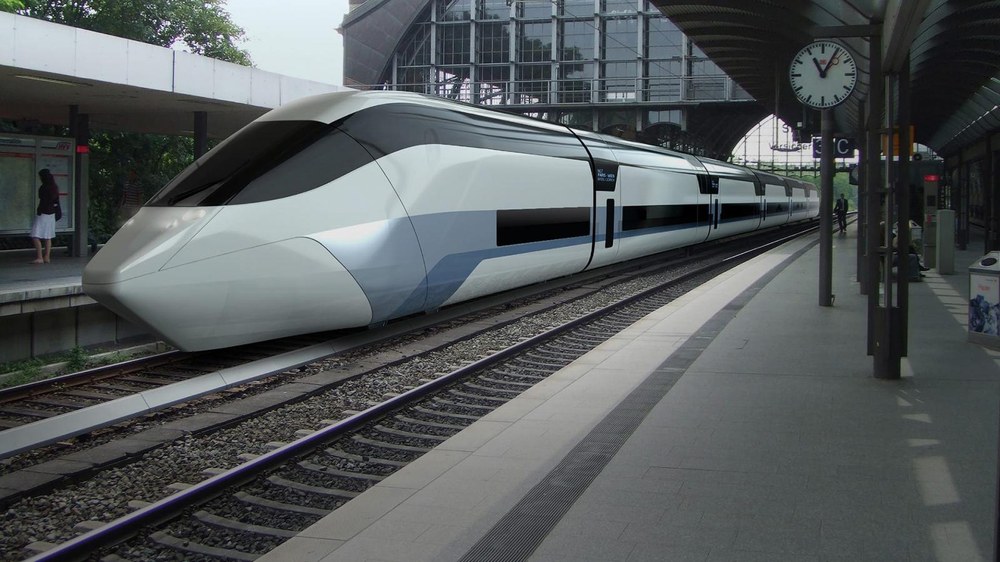Next Generation Train - High Speed Train HST
Based on this, an operating concept was developed consisting of high-speed main lines on which the high-speed railcar train (NGT HST) runs at timetable speeds of up to 400 km/h and an intercity railcar train (NGT LINK), which travels at speeds of up to 230 km/h and carries passengers from the surrounding areas.

Next Generation Train
Your consent to the storage of data ('cookies') is required for the playback of this video on Quickchannel.com. You can view and change your current data storage settings at any time under privacy.
The NGT HST railcar train, which is double-decker over its entire length, is designed according to the single-car principle and consists of eight middle cars and two end cars. It is 202 m long and can accommodate 790 passengers in two classes. The 20 m long middle carriages and the use of two driven single-wheel bogies, i.e. two pairs of wheels per carriage, are the result of methodical concept studies and represent an optimum lightweight design. Further lightweight construction measures are required for the feasibility of the train concept, which include the carriage body, the running gear and the interior cladding.
The single wagon principle means that each wagon can be driven individually, which brings considerable advantages for train formation and maintenance.
Several multiple units can be coupled via an optical coupling, which increases operational flexibility. This makes it possible to couple and uncouple trainsets dynamically, i.e. the trainsets can couple and uncouple remotely during the journey. Following the introduction of flexible block spacing as a principle of train protection, it would be possible to further increase line throughput.

The energy supply is integrated into the track, which means that the maintenance-intensive overhead line with the catenary can be dispensed with. The drive concept provides for inductive power consumption from the track distributed over the length of the multiple unit. The noisy and wear-intensive pantograph is therefore no longer required on the vehicle side.
The power cars provide around 50 percent of the drive power of around 18 megawatts via the permanent magnet motors of the single-wheel double bogies. The remaining drive power is provided by highly integrated wheel motors of the controlled mechatronic single-wheel bogies.
In principle, the vehicle is driven with driver assistance and anticipatory driving. The braking concept provides for the speed-dependent use of various brakes. At high speeds, aerodynamic and regenerative braking is used. At low speeds, linear eddy current brakes and, finally, mechanical brakes are used.

